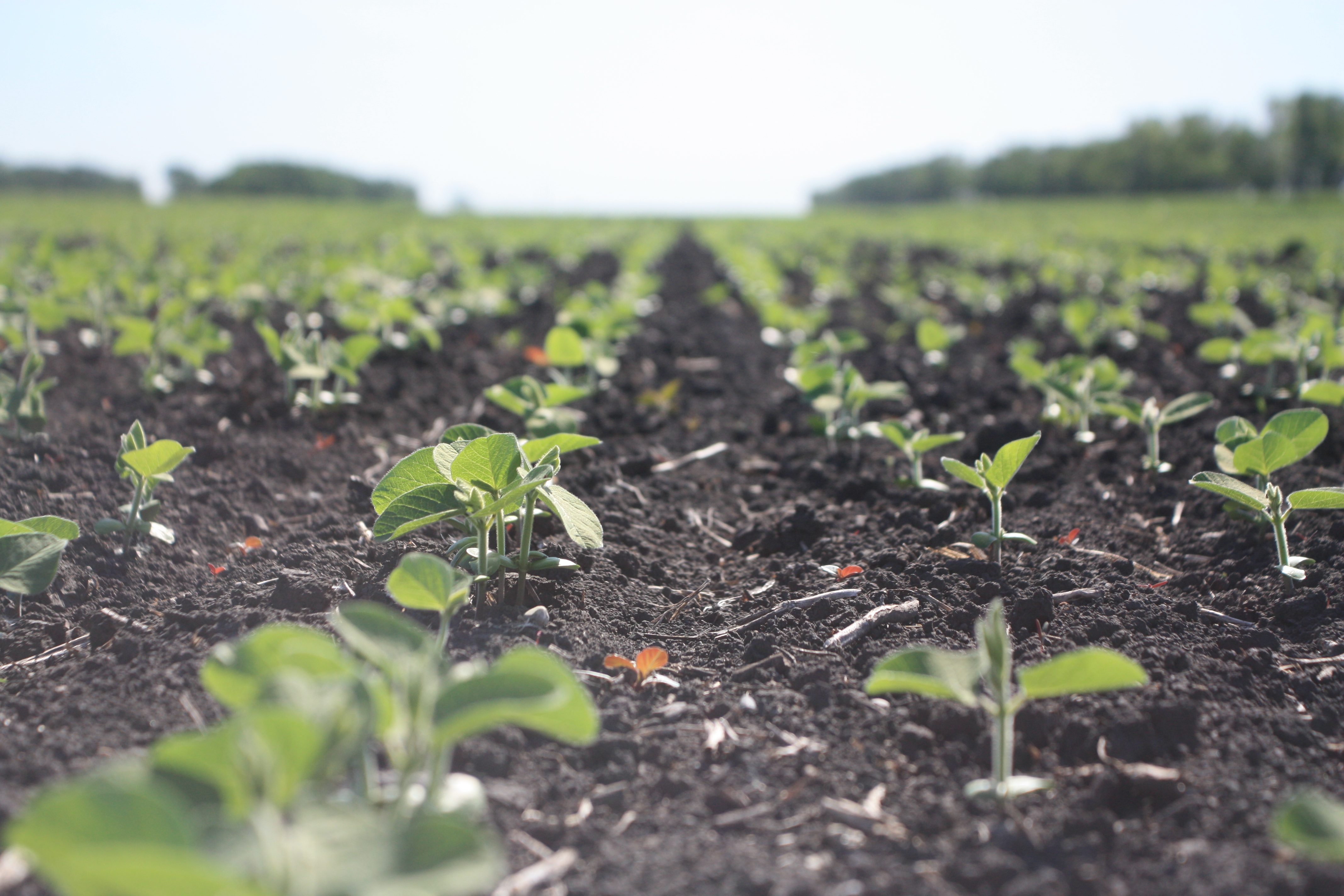
SOYBEAN SEEDING RATES were explored by the MPSG On-Farm Network in 2018 at 15 on-farm trial locations across Manitoba. Farmers compared 190,000 seeds/ac, 160,000 seeds/ac and 130,000 seeds/ ac replicated and randomized four times in these trials. Seeding equipment, soybean varieties, planting dates, crop history and management varied for all on-farm trials and are reflective of farmers’ normal soybean management practices.
The average achieved plant stand in the field for each farm is expressed as % survivability of each seeding rate. Average survivability of 190,000, 160,000 and 130,000 seeds/ac across farms were 87, 82 and 81%, respectively, when assessed at V1. This equates to 156,000, 130,000, and 113,000 plants/ ac, respectively.
There was no significant treatment by site-year interaction observed for soybean yield in 2018. This means that the relationship between seeding rates did not change across farms. When averaged across all farms, there was no significant yield difference between 190,000 and 160,000 seeds/ ac. However, 130,000 seeds/ac was significantly lower than the other two seeding rates by a modest 0.6 bu/ac (Figure 1).
The lack of yield response between 190,000 and 160,000 seeds/ac is not surprising. Economically optimum plant stands most often range from 140,000 to 160,000 live plants/ ac, according to recent small-plot research conducted in Manitoba. In this experiment, a seeding rate of 190,000 seeds/ ac resulted in a plant population that was within this recommended range and 160,000 seeds/ ac fell just below this range. However, the plant population established by 130,000 seeds/ ac fell well below this range, resulting in a statistically significant yield reduction.
When determining your own seeding rate, economic factors must be considered. For example, lets assume the cost of one unit of soybeans (140,000 seeds/ ac) to be $55/unit, and the current market price for soybean to be $10/ bu. Based on these estimates, the cost to increase from 130,000 to 160,000 seeds/ ac would be $11.78/ ac. The break-even yield difference needed to cover the extra cost of soybean seed is 1.2 bu/ ac, double what was observed within this trial. However, before cutting seeding rates it’s important to consider the agronomic implications of doing so.
It may be enticing to save money by cutting costs on soybean seed. But you may first want to consider factors that can reduce plant stand. This may include pest pressure and adverse growing conditions. A strong plant stand can maintain yield potential throughout the growing season, despite the loss of plants to disease or insect pressure, adverse weather or other abiotic factors.
Higher seeding rates that establish recommended plant stands may also afford your crop the ability to compete against weeds. Research has shown that both higher seeding rates and narrower rows have increased soybean competitive ability against weeds.
Looking at long-term production on your farm, there could be negative impacts from cutting your seeding rate. University of Manitoba researchers have pointed to the long-term risk of reduced soybean seeding rates contributing to the further spread of herbicide-resistant weed populations. Adequate seeding rates and other cultural weed management controls enhance the effect of herbicides, providing more complete weed control and preventing weed escapes. Therefore, before cutting your investment in seed consider the weediness of the field, your row spacing and the overall environmental conditions the crop is likely to experience.


